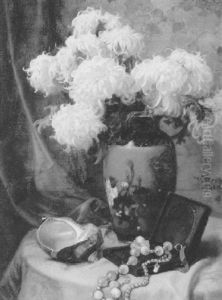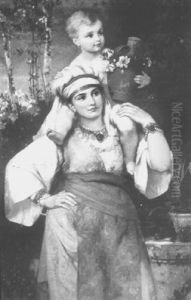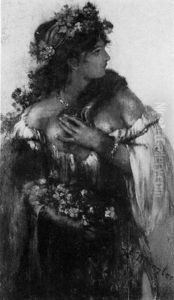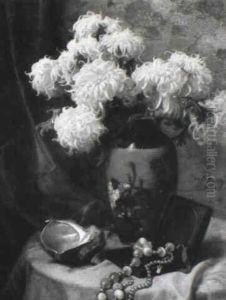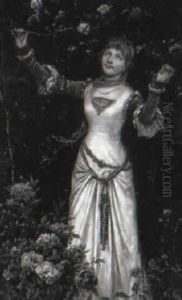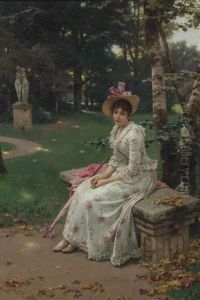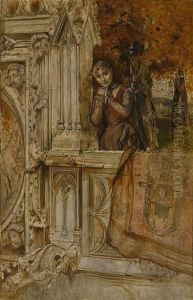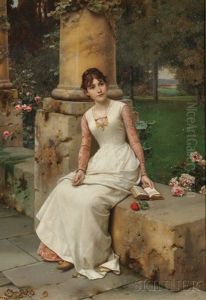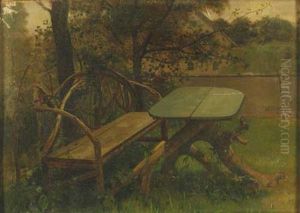Wilhelm Menzler Paintings
Wilhelm Menzler Casel was a distinguished German painter born on February 21, 1846, in Kassel, Germany. He is often celebrated for his contribution to genre painting and portraiture during the late 19th and early 20th centuries. His works are characterized by their detailed depiction of domestic and social scenes, often imbued with a sense of warmth and intimacy. Menzler's style was rooted in realism, and he had a particular talent for capturing the nuances of light and shadow, which added a lifelike quality to his paintings.
Menzler received his formal art education at the Kassel Art Academy, where he was initially trained. His quest for improvement and mastery in his craft led him to further his studies at the prestigious Munich Academy, a center for artistic innovation and excellence during his time. In Munich, he was influenced by the city's vibrant art scene and the works of other contemporary artists, which helped in refining his style and thematic focus. Throughout his career, Menzler was an active participant in the German art community, exhibiting his works in various shows and gaining recognition among art critics and the public alike.
Apart from genre scenes and portraits, Menzler also explored religious themes and landscapes, demonstrating his versatility as an artist. His religious works often depicted serene and contemplative moments, marked by a deep sense of spirituality and emotion. Despite the diversity in his subjects, his paintings consistently showcased his skill in creating detailed and nuanced compositions that evoke a sense of immediacy and connection with the viewer.
Wilhelm Menzler's legacy is preserved through his contributions to German art history and the collections that house his works, including museums and galleries in Germany and abroad. His ability to capture the essence of his subjects, combined with his technical proficiency, has ensured that his art remains appreciated for its beauty and emotional depth. Menzler passed away on December 18, 1926, in Munich, leaving behind a body of work that continues to be celebrated for its artistic merit and historical significance.












